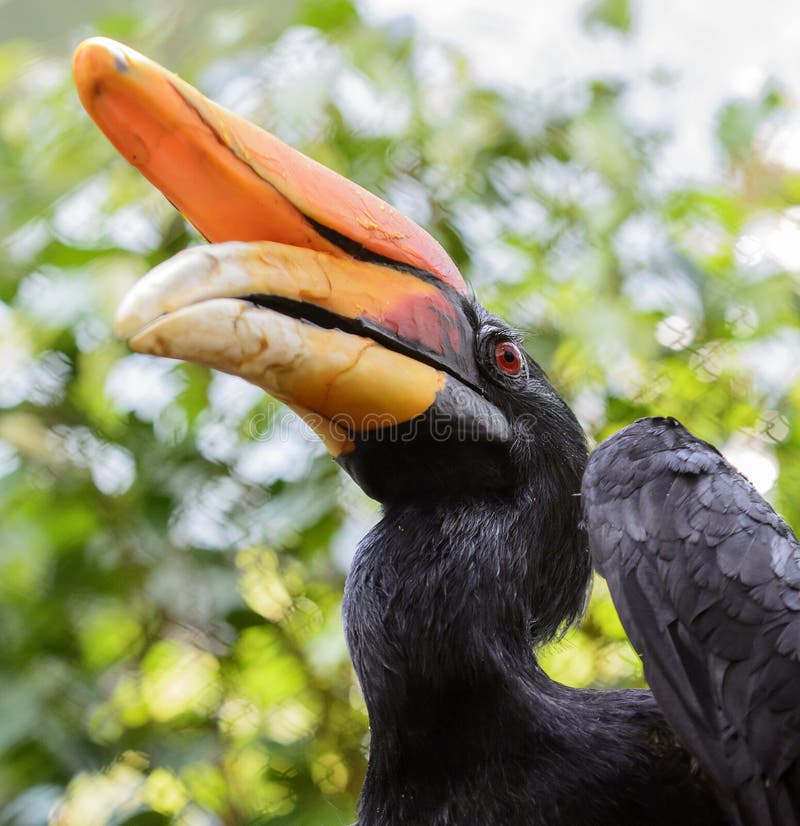

For up to four months, the bird remains walled off from the world as she incubates her eggs and raises the chicks. Once sealed in, the female is totally dependent on the male, who passes food to her through the hole. When a female hornbill is ready to lay eggs, she enters a hole in a tree, then seals the entrance-using a combination of feces, regurgitated fruit and mud delivered by her mate-leaving just a narrow opening. While different hornbill species have somewhat different diets, dispersing the seeds of different trees, there is one characteristic shared by all Asian hornbills: an unusual nesting strategy found in no other kind of bird on Earth. For the critical role they play in forest ecosystems, longtime hornbill researchers Margaret Kinnaird and Tim O’Brien, authors of The Ecology and Conservation of Asian Hornbills, have dubbed the birds the “farmers of the forest.” Although other animals also disperse the seeds of rain forest trees, hornbills are among the most effective because they travel widely and do not destroy seeds by chewing them, like many mammals, or by grinding them up in their gizzards, like many birds. Larger seeds are regurgitated and spit out after the birds work the flesh loose in their stomachs. Hornbills swallow smaller seeds, which pass through their systems undigested and are deposited in feces on the forest floor. In the process, the animals provide an invaluable service to many tree species: transporting the seeds contained within their fruit far enough away from the “mother tree” that they can germinate. Large birds, hornbills need large areas of forest to find enough fruit to sustain themselves. Though hornbills are not closely related to the smaller, similar-looking toucans of South America, they use their long bills in much the same way: to extend their reach as they forage in the forest canopy, primarily for fruit. In most species, these structures-called casques-are light and hollow, their translucence visible when backlit by the sun. The birds are named for the decorative and often colorful projections on their upper bills. Hornbills belong to a family of 57 species that are native to tropical Africa and Southeast Asia. Sadly, I’ve also seen firsthand the threats they face, especially from the loss of their forest habitat. At the same time, I’ve found out quite a bit about the lives of these fascinating creatures. To date, I’ve shot over 300 rolls of film-more than 10,000 photographs-of Asian hornbills.

Gradually, I succeeded and expanded my pursuit to more than a dozen hornbill species, not only in Indonesia, but also in Thailand and the Philippines. Finally, I learned that to photograph hornbills you need to have a lot of patience.

#Rhinoceros hornbill toucan how to
And I learned how to construct-while dangling hundreds of feet above the ground-blinds made of camouflage cloth, netting and leafy branches to fool the wary birds into letting me get close enough for intimate pictures. I learned how to rig these trees with ropes so I could climb up into the canopy. During that time, I learned how to identify and locate the fruiting trees that hornbills are most likely to return to day after day. Figuring out how to photograph the elusive birds in the wild, within their dense forest canopy habitat, took four years of fieldwork spread out over more than a decade. I thought, “I have to find a way to photograph these birds!”įrom that day on, getting pictures of Borneo’s hornbills, and especially the rhinoceros hornbill, became an obsession. Yet it was so far above me that getting a picture from the ground was impossible. A flash of red meant it was probably a rhinoceros hornbill, one of the most impressive birds on the planet. Looking up, I caught a glimpse of a huge, black, big-beaked bird that landed high in a tree. My first day in the rain forest of Borneo, I heard a loud whoosh, whoosh, whoosh of wing beats above the forest canopy. IT WAS OVER 20 years ago, but I remember as if it were yesterday. In a decades-long quest to shoot pictures of some of the world's rarest and most spectacular birds, a photographer learns about patience-and the power of individuals to make a difference


 0 kommentar(er)
0 kommentar(er)
